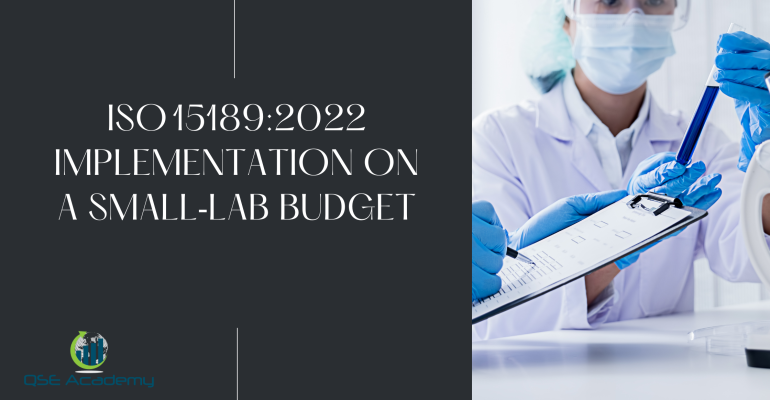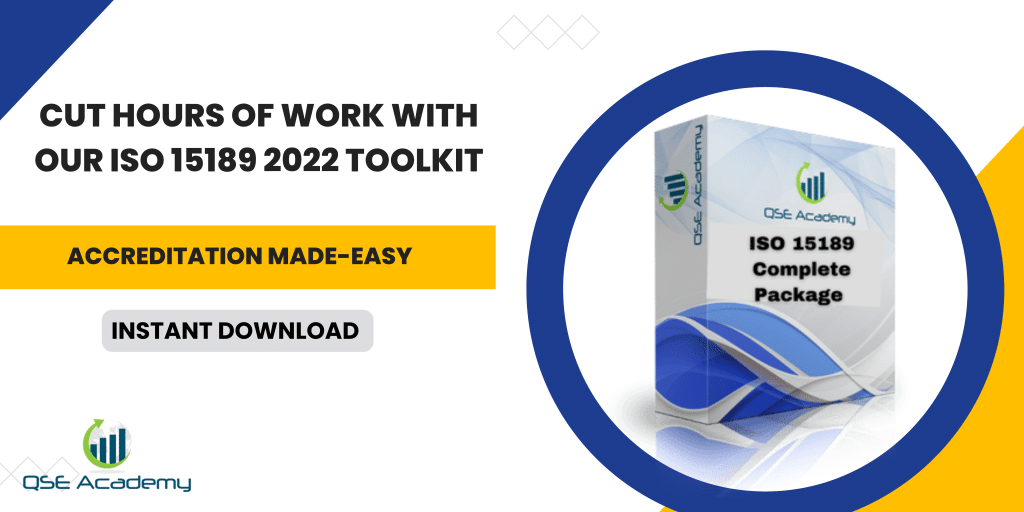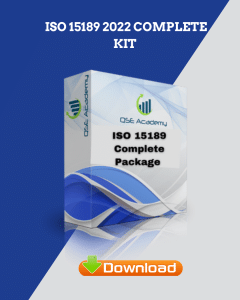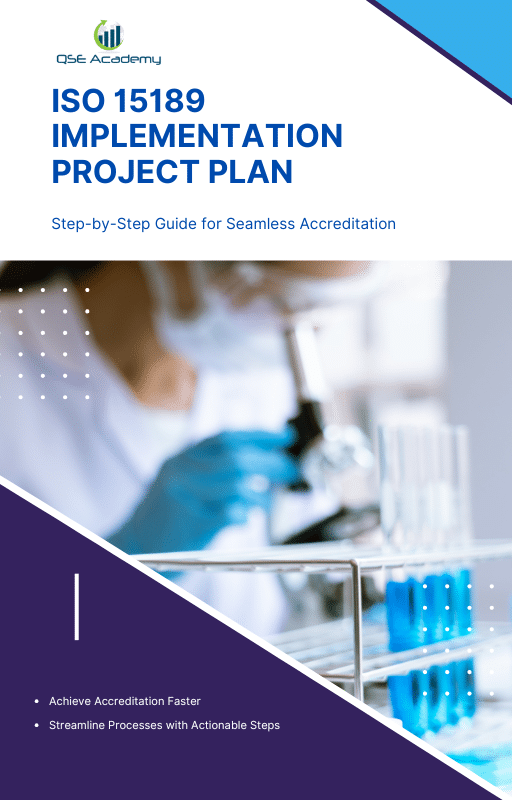ISO 15189:2022 Implementation on a Small‑Lab Budget
Last Updated on October 22, 2025 by Hafsa J.
Yes, Small Labs Can Afford ISO 15189 Accreditation
Here’s what I’ve noticed working with smaller laboratories: the moment someone mentions “ISO 15189,” people start thinking expensive consultants, new equipment, and months of paperwork. It’s no surprise many small labs assume accreditation is out of reach.
But here’s the truth—you don’t need a huge budget to meet ISO 15189:2022 requirements. What you need is clarity, planning, and a practical strategy that fits your scale. I’ve helped small clinics, hospital units, and startup labs achieve full compliance with smart resource allocation—not massive spending.
ISO 15189 isn’t about having the newest machines or hiring a full-time quality team. It’s about consistency, traceability, and competence—things that can be achieved with good management and a lean system.
In this guide, I’ll walk you through exactly how to implement ISO 15189:2022 on a small-lab budget—without cutting corners or compromising quality.
Let’s start by understanding where the real costs come from (and how to control them before they control you).
Understanding What Drives ISO 15189 Implementation Costs
Most labs overestimate ISO 15189 costs because they lump everything into one big unknown. The truth? Only a few areas actually require spending—and many can be managed internally with the right plan.
Here’s where most of the money goes during implementation:
-
Accreditation body fees: application, assessment, and surveillance costs.
-
Consulting or training: external help to interpret requirements or write documentation.
-
Documentation setup: manuals, procedures, and controlled records.
-
Equipment calibration and verification: especially if outsourced.
-
Staff training and time: the hidden cost of taking people away from daily work.
Not all of these are mandatory expenses—you can decide what to outsource and what to handle in-house.
Pro Tip: The most expensive part of ISO 15189 isn’t the audit—it’s rework. Rushing without a plan often means rewriting documents, repeating audits, or paying for additional visits. Slow down early, and you’ll save later.
Common mistake: treating ISO 15189 as a one-time project. Accreditation isn’t something you “buy”—it’s something you build. Once your system is set up correctly, maintaining it becomes low-cost and routine.
Now, before spending a single dollar, your smartest move is to perform a gap analysis to see where your lab really stands.
Step 1: Start with a Gap Analysis and Prioritize Essentials
Before spending on new tools, consultants, or fancy binders, start with a simple question: Where are we now? That’s exactly what a gap analysis tells you.
It’s your roadmap—it shows what’s already in place, what needs fixing, and what can wait. Most small labs discover they’re already halfway compliant without realizing it.
Here’s how to do it efficiently:
-
Use a clause-by-clause checklist based on ISO 15189:2022.
-
Evaluate your current practices—look at procedures, staff competence, equipment logs, and records.
-
Document the gaps clearly: what’s missing, who owns it, and how important it is.
-
Rank your priorities.
-
High = anything affecting patient safety or regulatory compliance.
-
Medium = documentation and staff training.
-
Low = non-critical upgrades or enhancements.
-
Pro Tip: You don’t need paid software to do this. A basic Excel sheet can track each clause, your compliance status, and planned actions.
Example: A small regional lab I worked with spent zero dollars on consultants in their first phase. They used a free online checklist, held internal meetings, and identified that 70% of their system gaps were procedural—not equipment-related. That discovery alone saved them thousands.
Once you’ve mapped your gaps, you’ll know exactly where to focus your limited budget—and that’s when it’s time to build your lean Quality Management System.
Step 2: Build a Lean Quality Management System (QMS)
Here’s where most labs get overwhelmed—they think ISO 15189 requires hundreds of documents. It doesn’t. What it really wants is a system that’s effective, consistent, and documented enough to prove you’re in control.
Start lean. Focus only on what’s essential to show competence and traceability.
Here’s how small labs can do it without drowning in paperwork:
-
Use templates. Don’t start from scratch—download or adapt ready-made ISO 15189 documents. Edit them to reflect your actual processes.
-
Keep it simple. Write procedures your staff can actually follow. A short, clear SOP that’s used daily is better than a 20-page document nobody reads.
-
Reuse what you already have. Many safety or regulatory documents (like waste management or equipment logs) can be aligned with ISO 15189 instead of rewritten.
-
Go digital. Use free tools like Google Drive, OneDrive, or Excel to control versions and track records.
Pro Tip: Don’t chase “perfect” documents—chase usable ones. Auditors prefer seeing a simple, working system over a polished manual that’s never implemented.
Common mistake: copying entire QMS templates word-for-word. ISO 15189 expects your documentation to match your reality. Customize every section so it reflects how your lab actually operates.
Once your lean QMS is set up, your next focus is people—because even the best system fails if your team isn’t trained to use it.
Step 3: Train Staff Internally and Build Competence Gradually
You don’t need to fly your team to expensive seminars to meet ISO 15189 training requirements. The goal isn’t fancy certificates—it’s proven competence. And that can be built right inside your lab.
Start by identifying what each role needs to know: sample handling, equipment use, data entry, or reporting. Then, create a basic training matrix to track who’s trained, who still needs coaching, and when refresher sessions are due.
Here are low-cost ways to train effectively:
-
Peer-to-peer sessions: have senior staff train newer ones using real samples and actual workflows.
-
In-house presentations: short weekly sessions where one staff member explains a procedure or recent change.
-
Free webinars and online resources: many accreditation bodies and training sites offer no-cost ISO 15189 content.
-
Shadowing and observation: simple, hands-on training that doubles as competence assessment.
Pro Tip: Record every training session—date, topic, trainer, and attendee signatures. Even if it’s a 10-minute discussion, it counts as evidence for auditors.
Example: One small diagnostic lab in the Philippines turned its monthly staff meetings into mini-training sessions. Each month, a team member reviewed one ISO clause or SOP. It cost nothing—and became their strongest proof of ongoing competence.
Common mistake: forgetting to document informal training. If it’s not recorded, it didn’t happen in the eyes of an assessor.
Once your team is trained and confident, you can start using affordable digital tools to organize your documents, data, and records efficiently.
Step 4: Use Affordable Tools for Data, Documents, and Records
A small lab doesn’t need a pricey software subscription to stay organized—you just need a system that’s consistent, secure, and easy for your team to use. Digital tools can do most of the heavy lifting for free or at minimal cost.
Here’s what I recommend for lean, low-cost ISO 15189 management:
-
Google Drive or OneDrive: use shared folders with clear naming conventions for controlled documents and forms.
-
Excel or Google Sheets: perfect for tracking training, calibration, maintenance, and nonconformities.
-
Free project trackers (like Trello or Notion): simple way to assign tasks, track progress, and set audit reminders.
-
Cloud backups: even a free Dropbox plan can safeguard your records from accidental loss.
Pro Tip: You don’t need automation to be compliant—you need traceability. As long as you can show document control, revision history, and access tracking, you’re meeting the standard’s intent.
Example: A 10-person medical lab I worked with managed their entire QMS in Google Workspace—manuals, forms, audit schedules, everything. It was searchable, shareable, and audit-friendly. They never printed a binder.
Common mistake: relying only on paper. It may seem cheaper at first, but printing, storing, and updating documents takes more time (and money) long-term. A digital-first system keeps your lab agile and ready for any audit.
Once your system is organized, the next big milestone is learning how to audit yourself effectively—without hiring external help.
Step 5: Conduct Internal Audits and Management Reviews In-House
You don’t need to hire a consultant to perform your internal audit. ISO 15189 allows you to do it yourself—as long as your audit is objective, documented, and covers all key processes.
Start by creating a simple audit checklist that mirrors the clauses of ISO 15189:2022. Schedule one or two internal audits a year, depending on your lab’s size and activity. Choose someone not directly involved in the process being audited—this keeps it fair and credible.
Here’s what works well for small labs:
-
Prepare: Review documents and records before the audit.
-
Interview staff: Ask how they perform tasks, and compare that to written procedures.
-
Record findings: Note what’s compliant, what needs correction, and what could be improved.
-
Follow up: Assign corrective actions and deadlines.
Then, hold a management review to summarize what you found. It doesn’t need to be formal—just a meeting where you discuss audit results, risks, training, and improvement opportunities.
Pro Tip: Combine your internal audit summary and management review minutes into one report. It saves time and still checks every compliance box.
Example: One small diagnostic lab in Malaysia saved nearly $2,000 by conducting its own internal audit using an online checklist and two staff volunteers. Their accreditor later praised the approach for being practical and transparent.
Common mistake: skipping management review because “we’re a small lab.” ISO 15189 doesn’t care about size—it cares about leadership involvement. Even a one-hour meeting twice a year shows strong management commitment.
Once you’re confident with your internal audits, the next step is choosing the right accreditation partner—and doing it smartly.
Step 6: Choose the Right Accreditation Partner (and Negotiate Wisely)
Not all accreditation bodies are the same—and choosing the right one can make a huge difference in both cost and experience. Small labs often default to the first name they find, but smart selection (and negotiation) can save thousands.
Here’s how to approach it strategically:
-
Compare options. Look at national vs. international accreditation bodies. Local agencies often offer lower fees and easier communication.
-
Understand what you’re paying for. Accreditation fees usually include document review, assessment days, and travel costs for assessors.
-
Start small. If your lab offers multiple tests, consider applying for accreditation in a limited scope first. You can always expand later.
-
Ask about phased assessments. Some bodies allow split visits—initial evaluation first, full audit later—spreading costs over time.
Pro Tip: During your first inquiry, ask directly, “Can you provide a small-lab package or phased pricing?” You’d be surprised how often the answer is yes. Accreditation bodies appreciate honesty and preparation.
Common mistake: paying for a full-scope assessment before you’re ready. It adds pressure and can lead to extra costs if nonconformities delay your accreditation. Always schedule your assessment once your system is stable and staff are confident.
Once your accreditation partner is chosen and the audit scheduled, the final step is maintaining compliance—and keeping costs low even after the certificate arrives.
Step 7: Maintain Compliance with Continuous Improvement
Getting accredited is one thing—staying accredited is where most small labs either thrive or struggle. The good news? Maintaining ISO 15189 doesn’t have to be expensive or time-consuming if you focus on prevention instead of correction.
Here’s how to keep your system running smoothly year-round:
-
Track your KPIs: Monitor things like turnaround time, sample rejection rates, and instrument downtime. These help you spot issues before they become audit findings.
-
Schedule small audits. Instead of waiting for one big annual audit, do short quarterly reviews. It’s easier to manage and keeps your team sharp.
-
Update records regularly. A few minutes a week updating logs or training records is better than scrambling before an assessment.
-
Hold quick refresher trainings. Review one ISO clause or SOP in every staff meeting—it keeps awareness high.
-
Log improvement ideas. ISO 15189 expects continual improvement. Even small actions, like reorganizing a sample area or updating a checklist, count as evidence.
Pro Tip: Set aside a small portion of your operating budget each year—just 2–3%—for quality system maintenance. That’s enough to cover refresher training, minor document updates, and calibration without financial strain.
Common mistake: going “quiet” after the certificate. Many labs pause their QMS activities until the next audit cycle, which leads to findings and lost momentum. Keep the system alive—it should work for you, not just for auditors.
Once you have maintenance under control, let’s tackle a few of the most common questions small labs ask when implementing ISO 15189 on a tight budget.
FAQs – ISO 15189 on a Budget
Q1. What’s the minimum investment needed for ISO 15189?
It depends on your scope and country, but many small labs achieve accreditation for under $3,000–$5,000 when they manage documentation and training internally. The biggest savings come from doing your own gap analysis, internal audits, and management reviews.
Q2. Do we need consultants to get accredited?
Not necessarily. If your team is committed and willing to learn, you can implement ISO 15189 using guides, templates, and free online training. Consultants are helpful for complex scopes or tight timelines—but they’re not mandatory.
Q3. Can we implement ISO 15189 in phases?
Yes—and it’s actually the best approach for small labs. Start with the essentials (scope definition, documentation, competence, and equipment control). Then, gradually add more elements like risk management and improvement programs once your foundation is solid.
Q4. How can we prepare for the external audit on a limited budget?
Do a mock audit using your internal checklist. Have someone unfamiliar with the process review your records, ask assessor-style questions, and verify traceability. It’s free and often reveals the same issues an external auditor would find.
Quality Doesn’t Have to Be Expensive
ISO 15189 isn’t about how much money you spend—it’s about how well you manage what you already have. I’ve seen small labs with limited budgets outperform large, well-funded facilities simply because they planned carefully, trained consistently, and documented wisely.
If your team understands the requirements, prioritizes what matters, and stays disciplined with records and reviews, accreditation is completely achievable—no matter your size or budget.
The secret is consistency, not complexity. A lean system, supported by engaged people and smart use of free tools, will take you further than any expensive consulting package.
If you’re ready to take the next step, download QSE Academy’s ISO 15189:2022 Small-Lab Implementation Toolkit—complete with gap-analysis templates, sample procedures, and a budget-friendly QMS planner designed for small laboratories.
Because in the end, quality isn’t about cost—it’s about commitment.
Whether it’s ISO 9001, ISO 22000, or the cosmetics-focused ISO 22716, I’ve spent my career I’m not here to call myself an expert—I prefer “enthusiast” because I truly love what I do. When I’m not writing about standards, you’ll probably find me playing Piano 🎹, connecting with people, or diving into my next big project💫. I’m an engineer specialized in the food and agricultural industry
make ISO standards less intimidating and more approachable for everyone.
turning complex jargon into clear, actionable steps that businesses can actually use.
There’s something incredibly rewarding about helping people navigate food safety and quality management systems
in a way that feels simple, practical, and even enjoyable.
I have a Master’s in QHSE management and over 12 years of experience as a Quality Manager
I’ve helped more than 15 companies implement ISO 9001, ISO 22000, ISO 22716, GMP, and other standards
My clients include food producers, cosmetics manufacturers, laboratories, and service companies
I believe quality systems should be simple, useful, and efficient.













